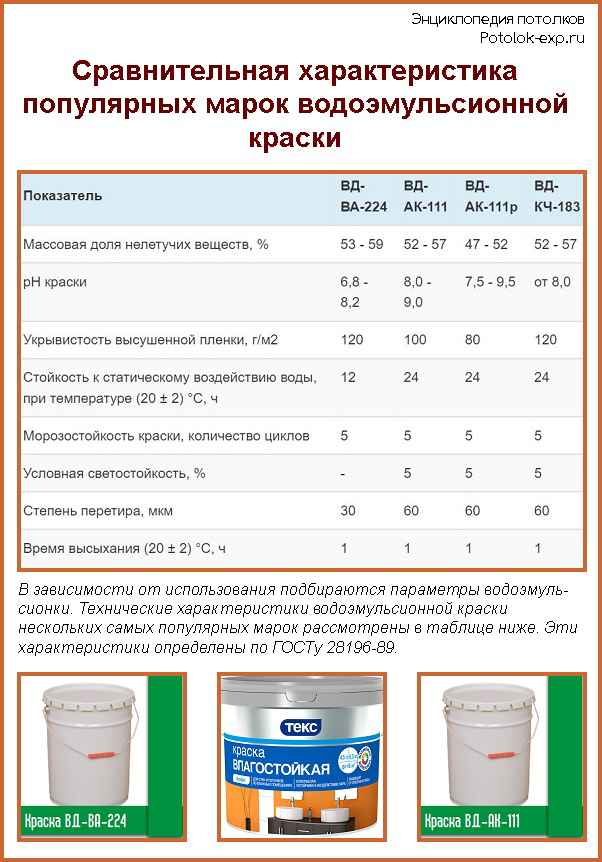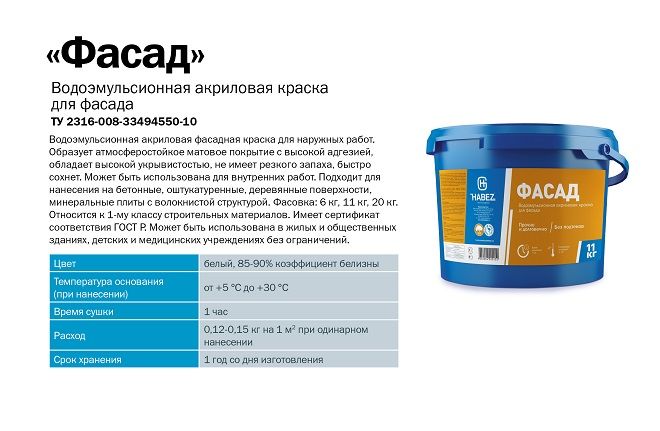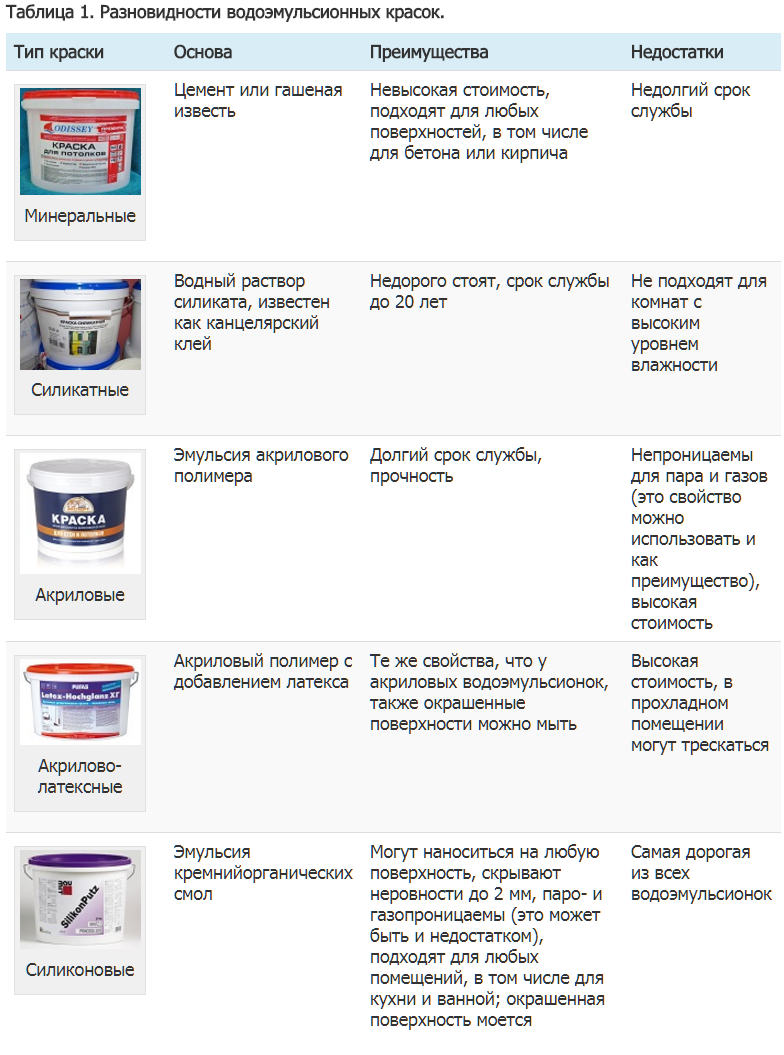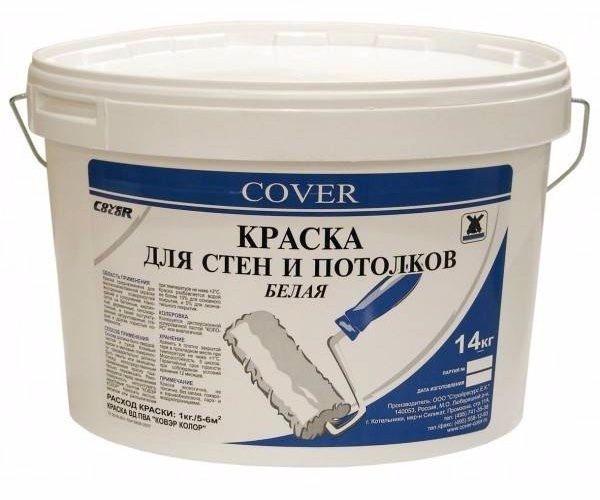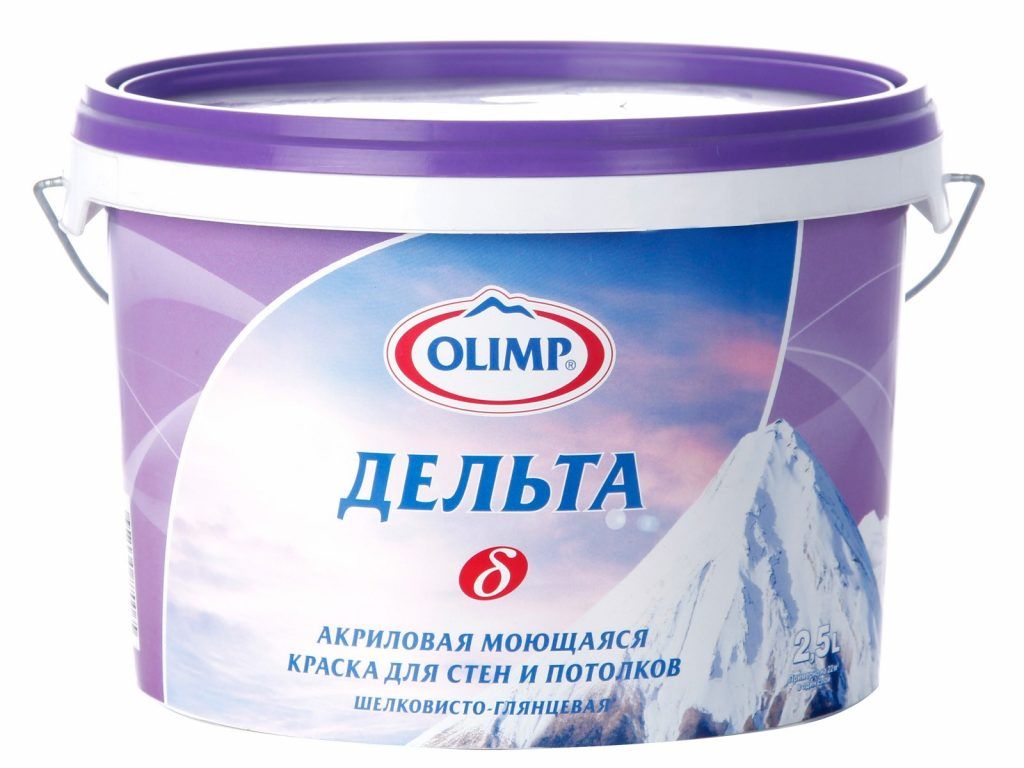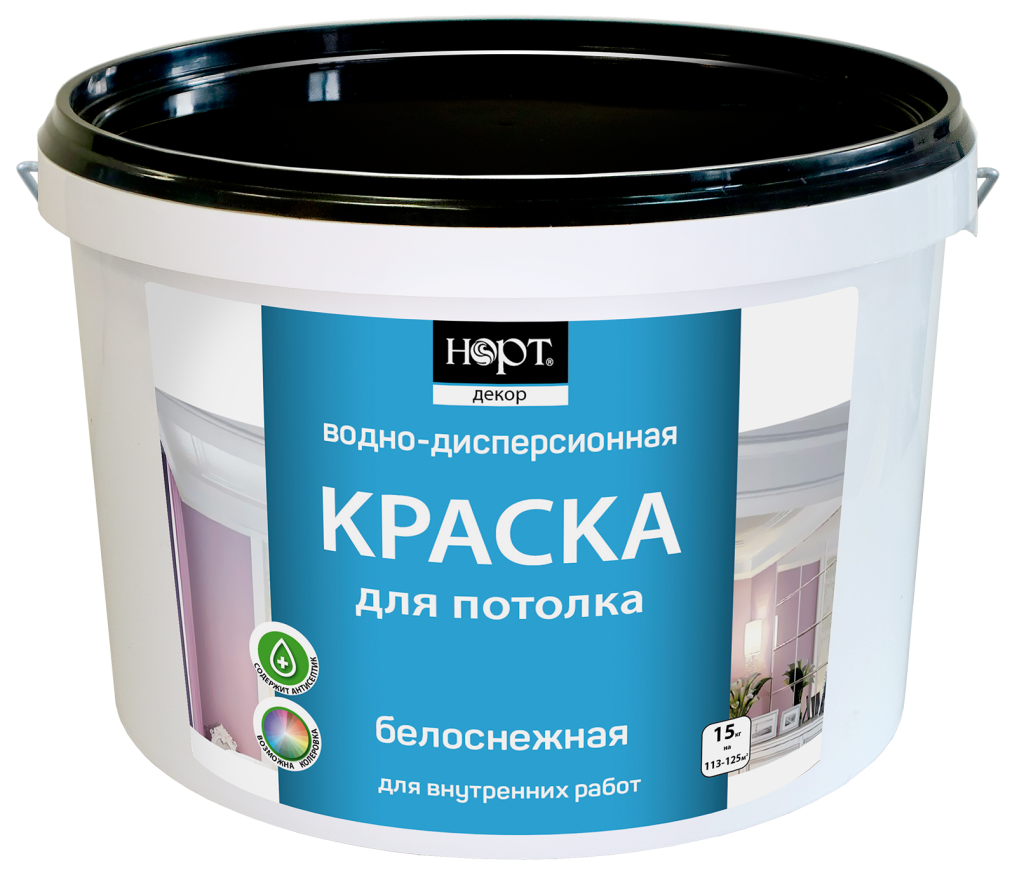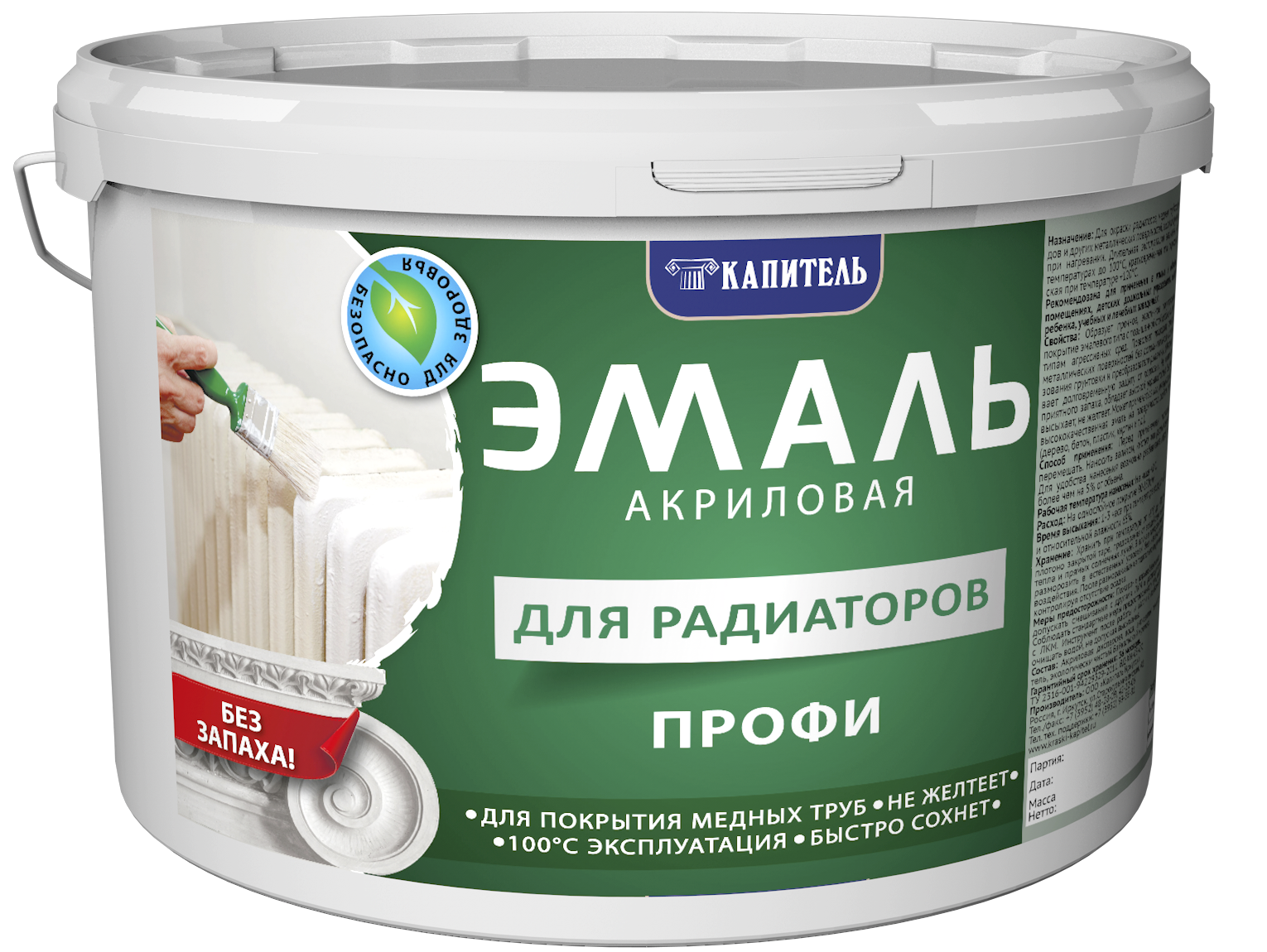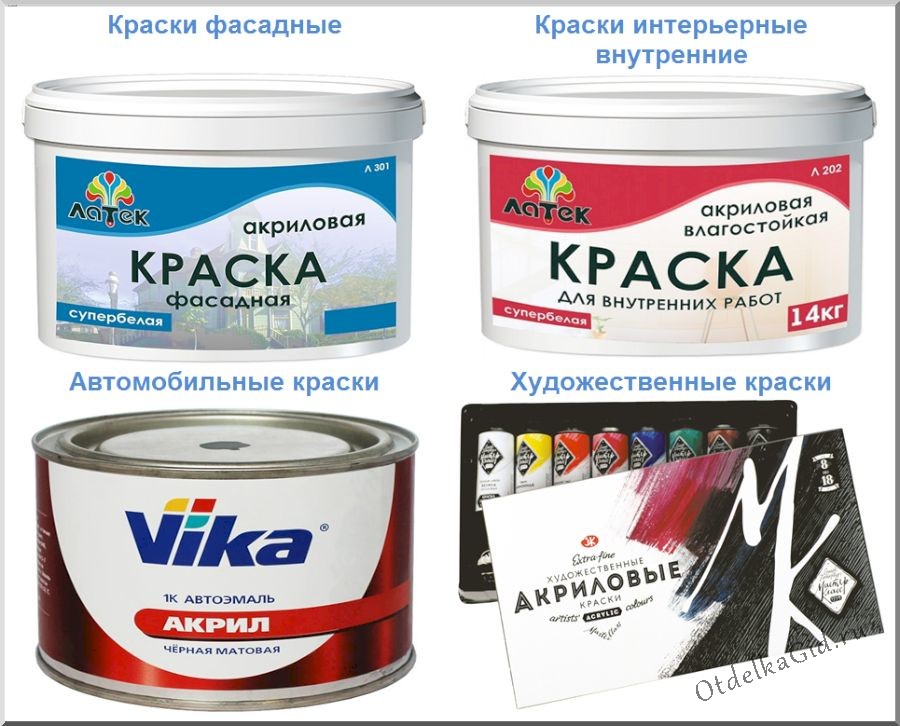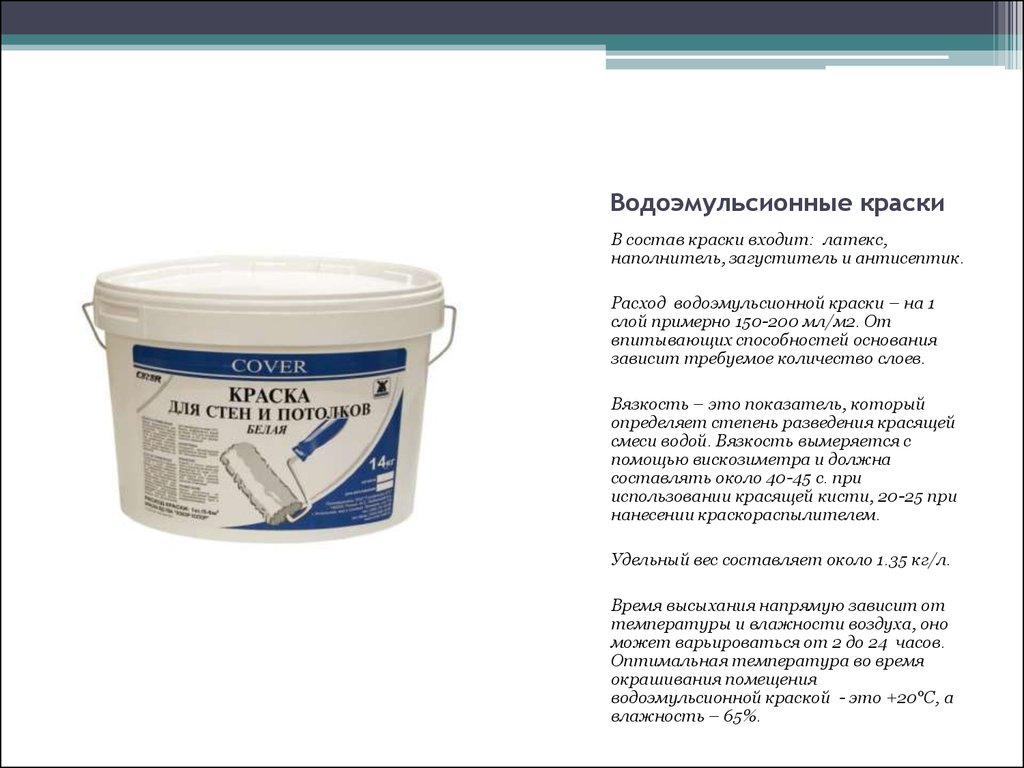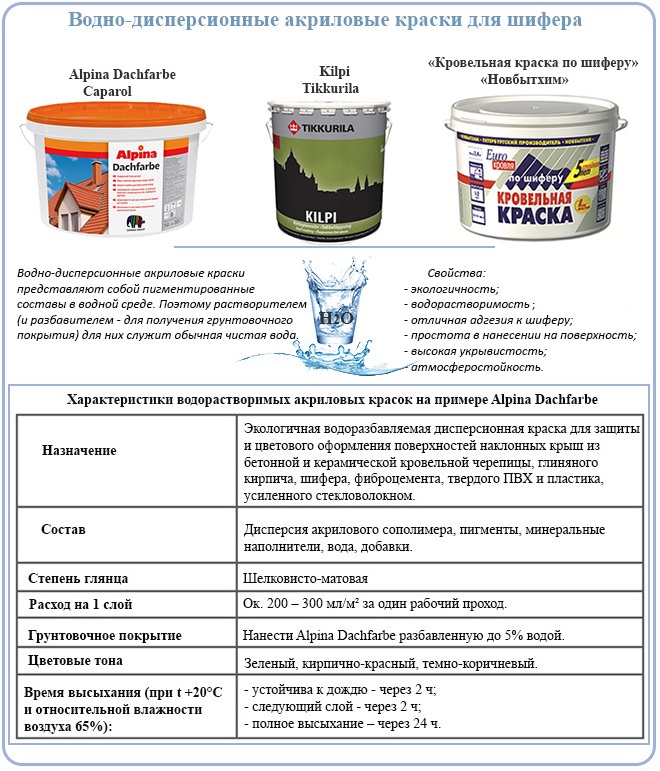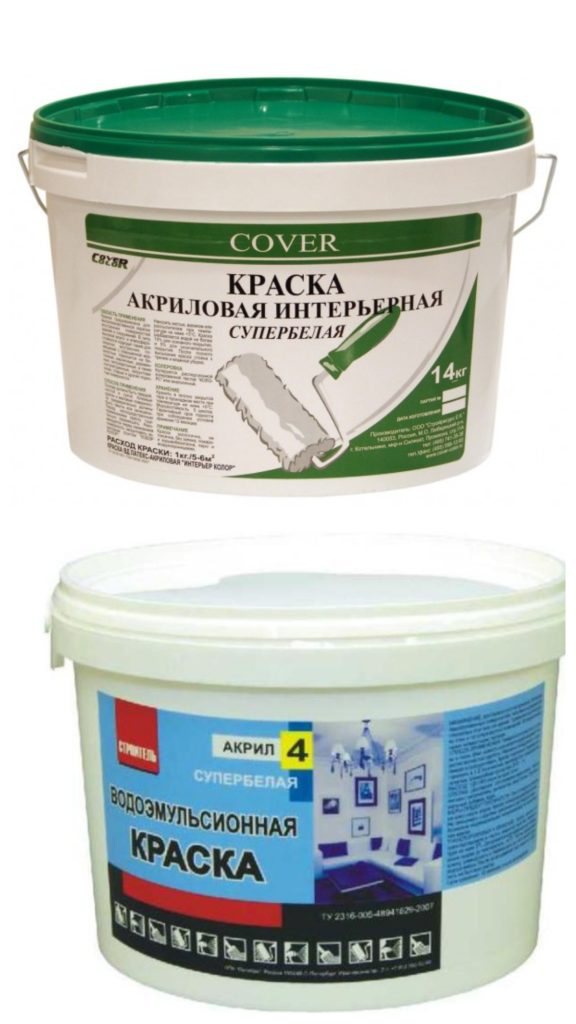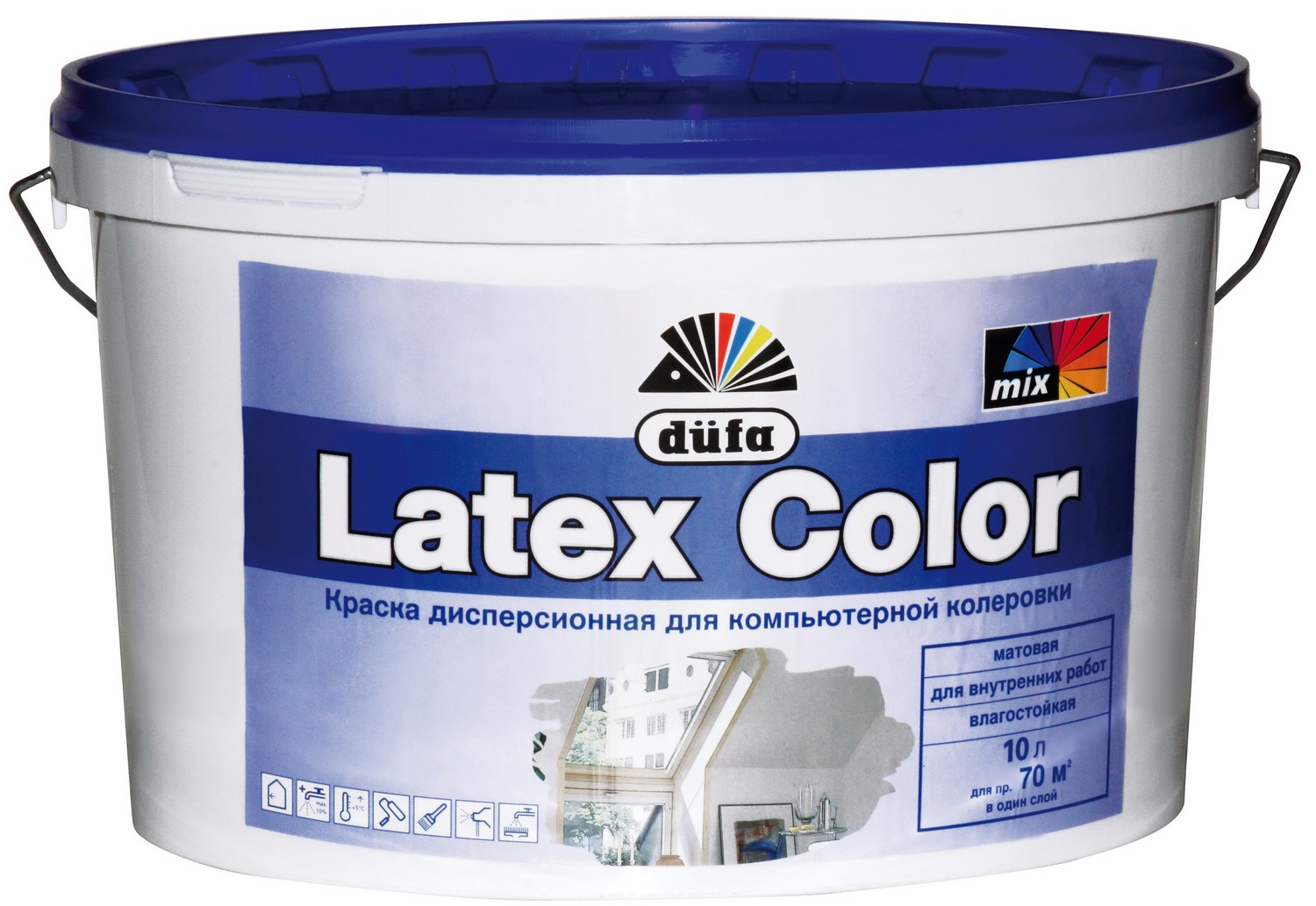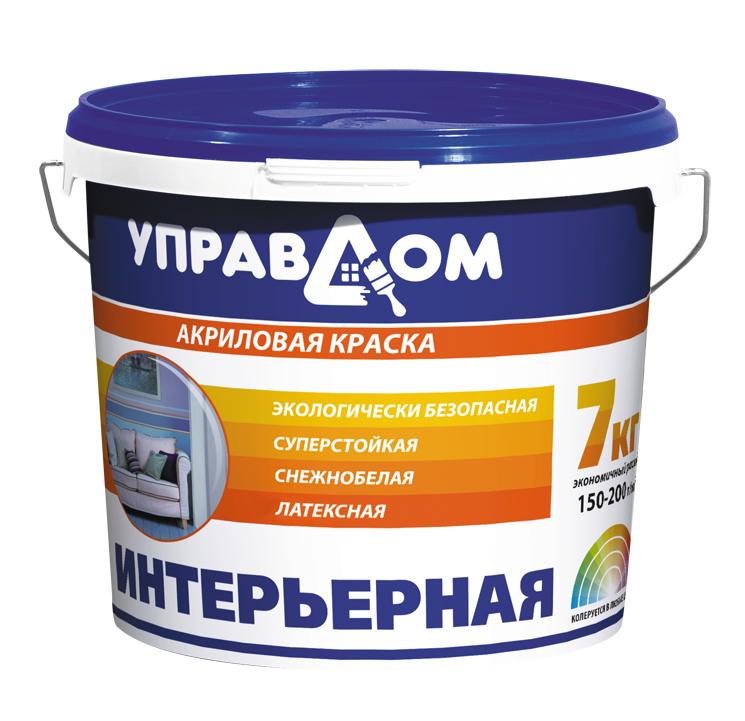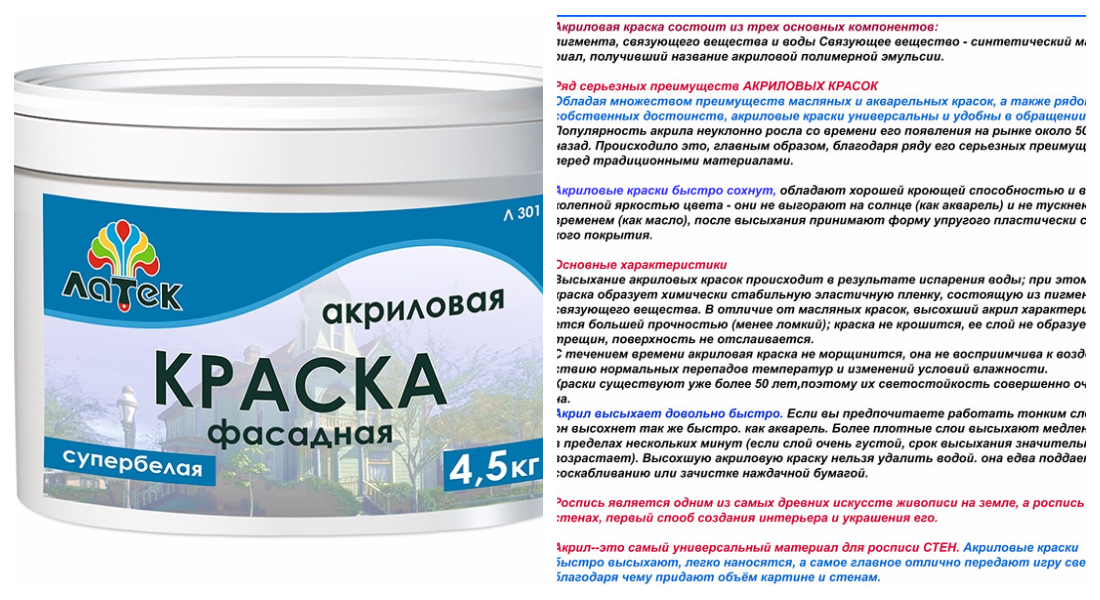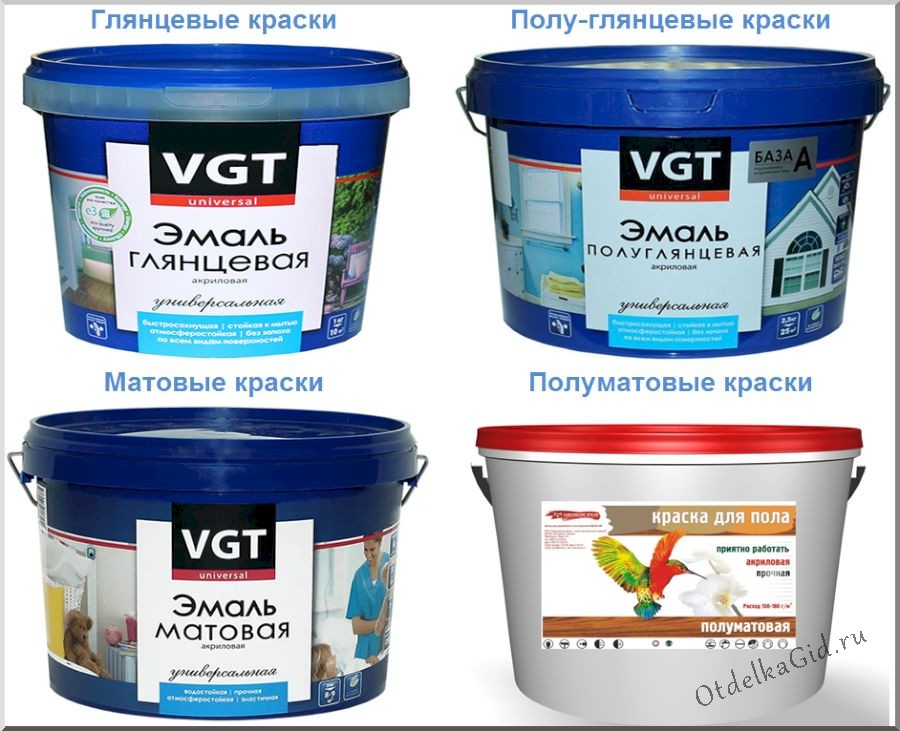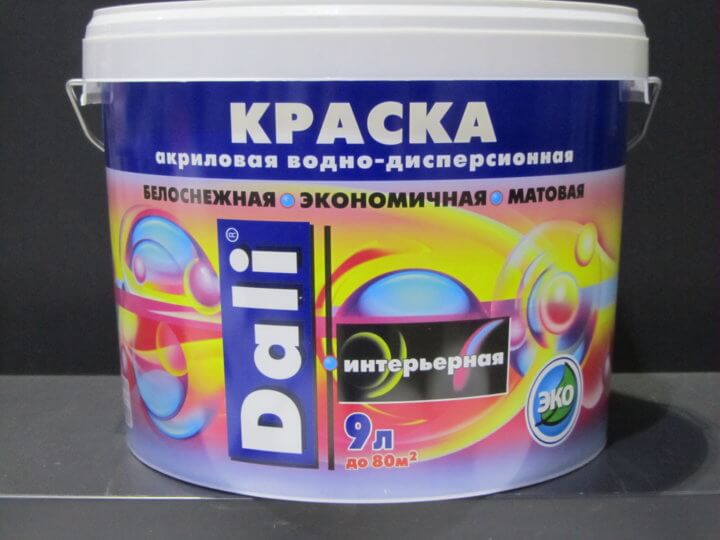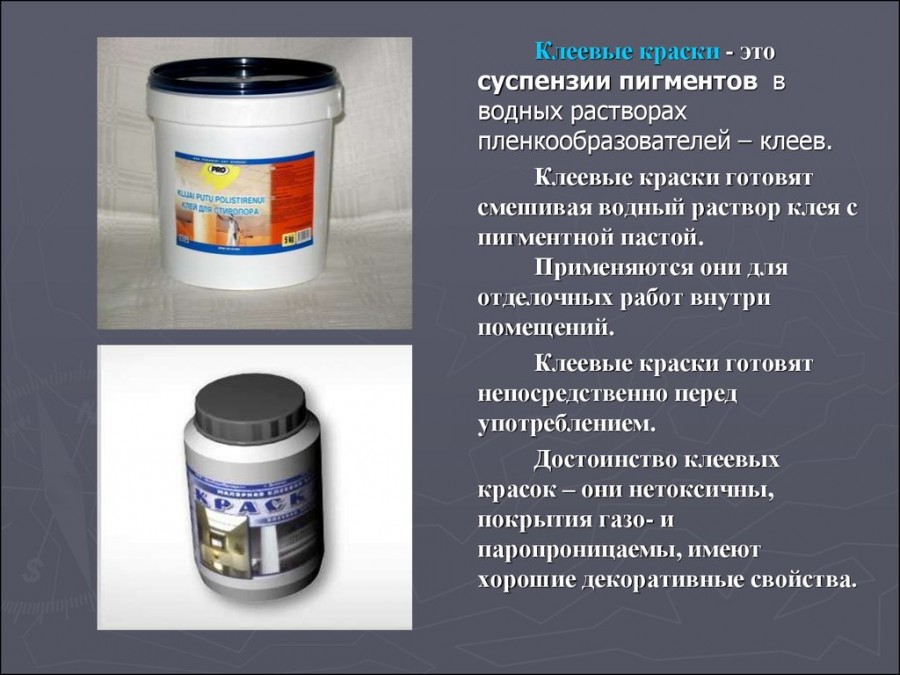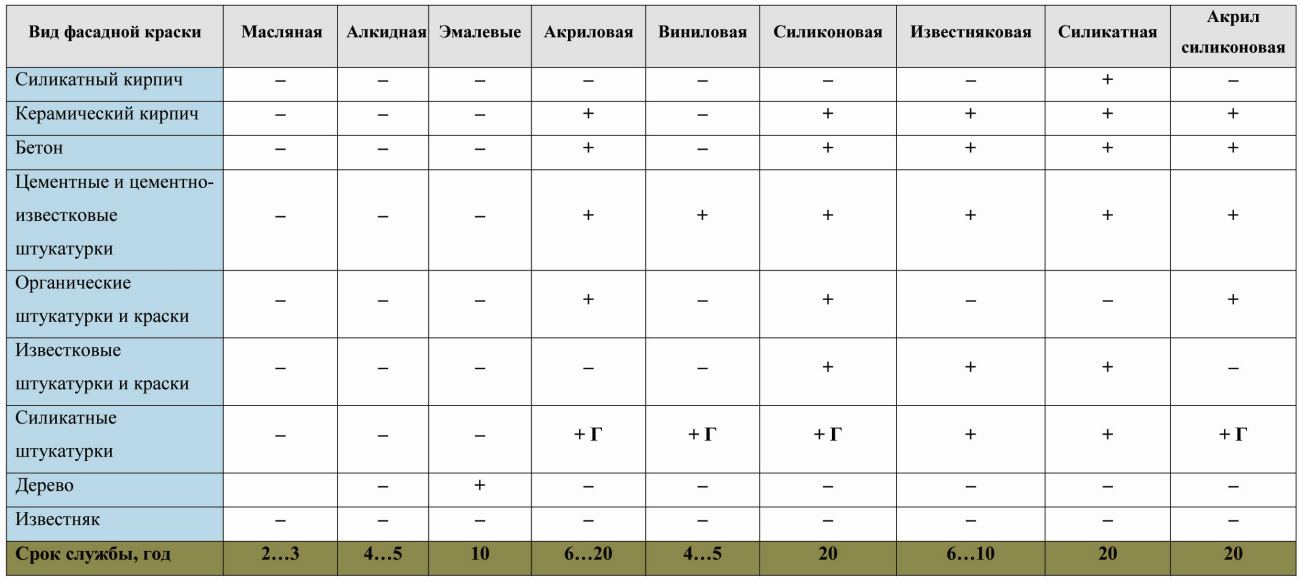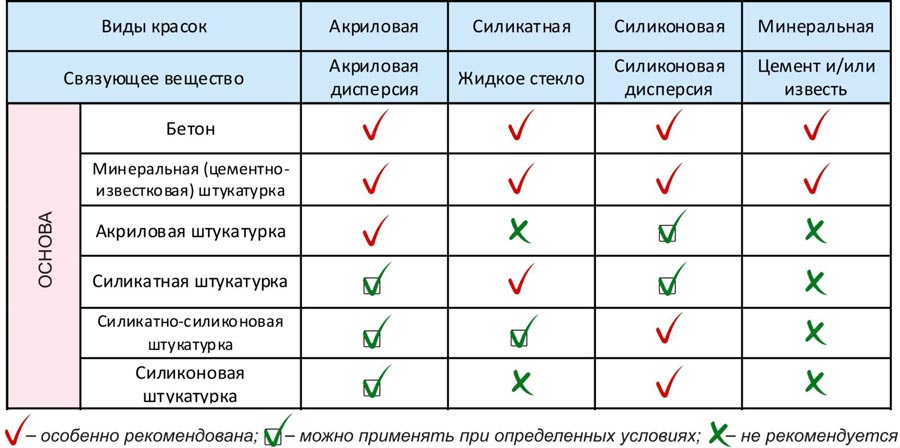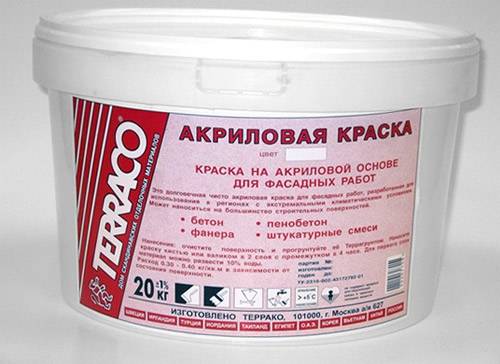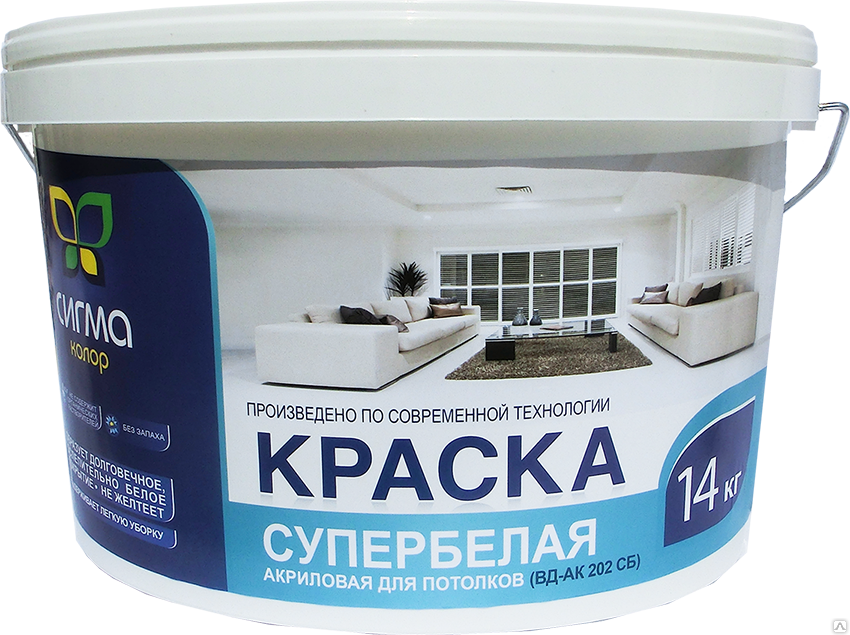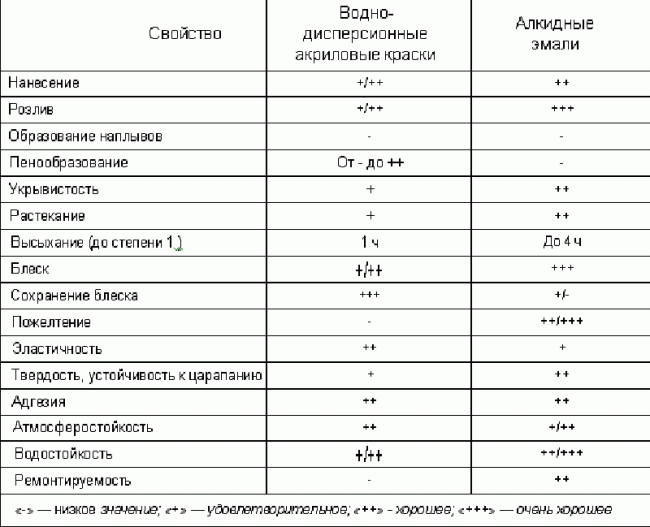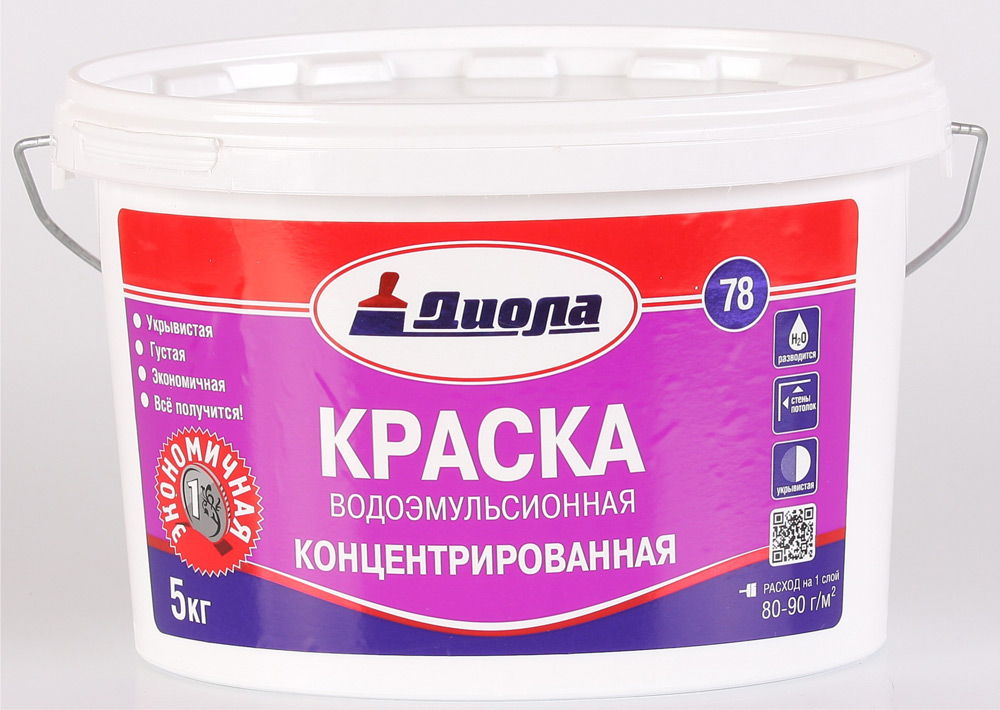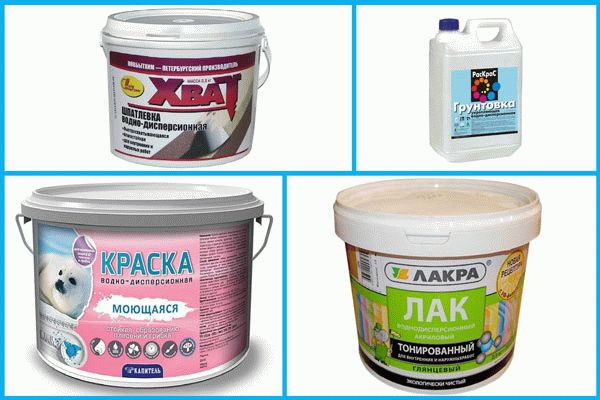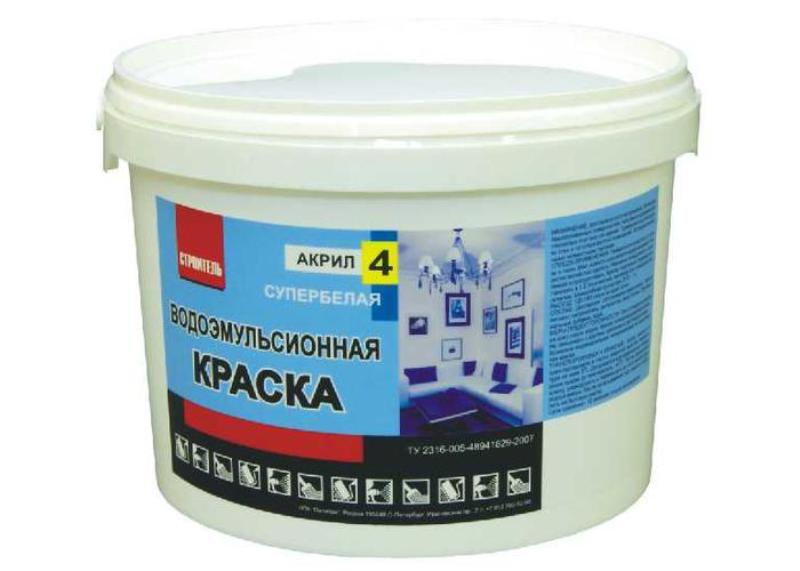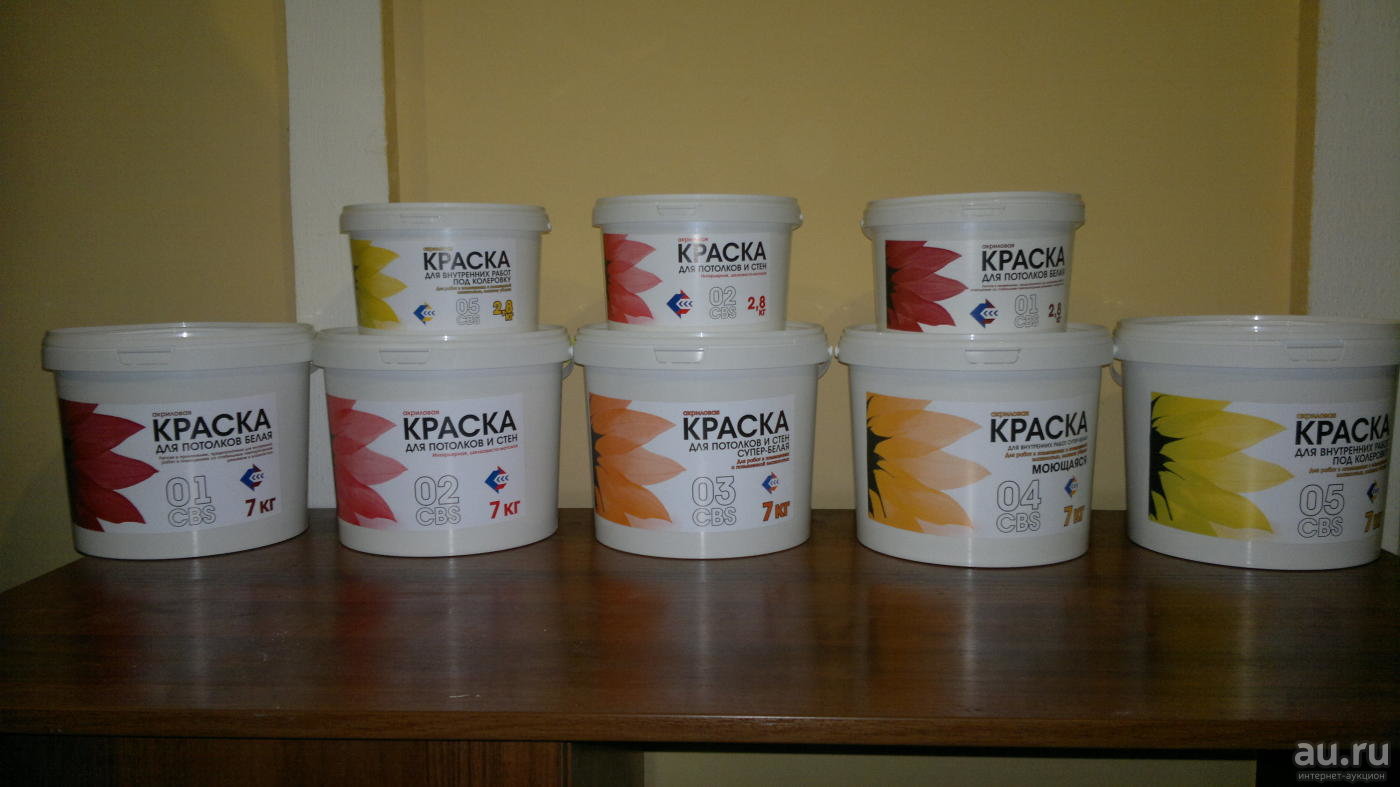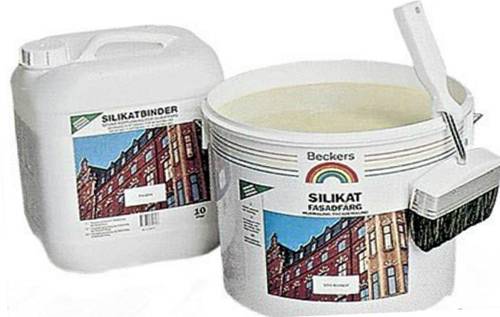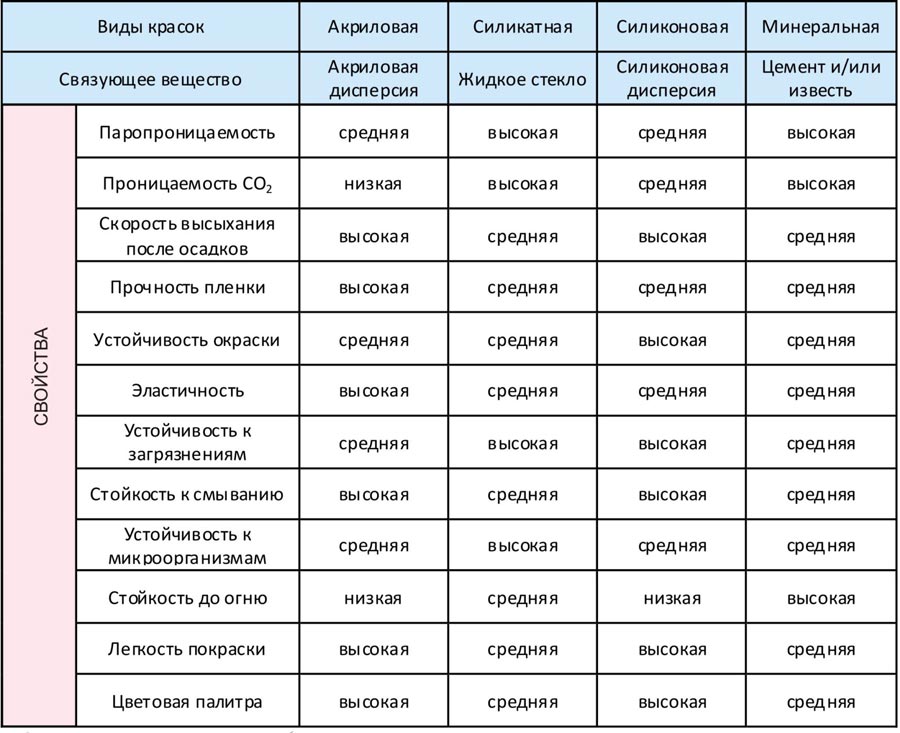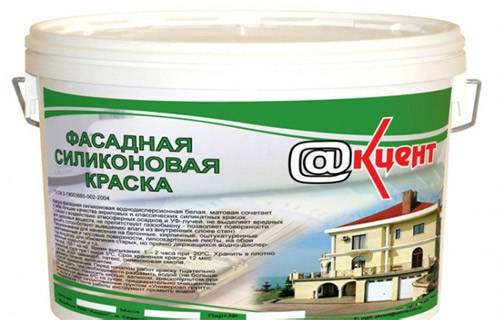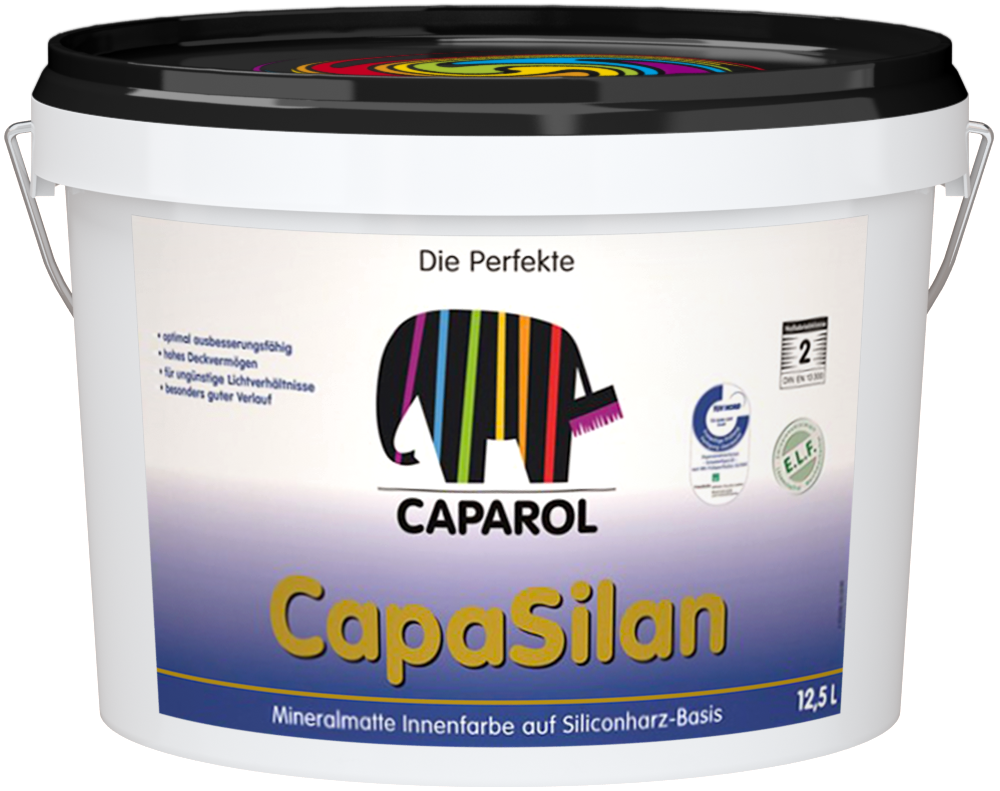Types of binder polymers
Dyes based on elastic polymers and synthetic resins are produced for various purposes. For example, there is a rubber acrylate-latex, specificity - for outdoor work on concrete.
An interesting development - decorative paint with sand on a viscous polymer base, reminiscent of latex. When dry, it gives a unique stone-like texture.
Decorative paint with matt sand.
Compositions with the addition of rubber (other organic resins) are expensive, but they are the most environmentally friendly. Their use is exclusively for painting smooth surfaces in living rooms.
The polyvinyl acetate base is suitable for painting the ceiling with a spray gun. In the people it is better known as "water emulsion", at one time it was a good alternative to whitewashing. Its binder is in many ways reminiscent of PVA construction glue. It is well washed off raw until the polymerization process is complete. It is not suitable for walls - leaning back, you can leave with a stain on your clothes, like a chalk print.
Polyvinyl acetate paints are often used to paint surfaces inside buildings.
Butadiene styrene blend is in many ways similar to water emulsion, but this is a later proposal. It has high adhesion, practically does not wash off the surface, does not stain clothes. The main difference is that the pigment quickly fades from ultraviolet radiation. Therefore, when painting balconies and loggias, it is still better to stay on white. For the hallway, pantry or corridors, any color option is acceptable.
Styrene-butadiene paints are also water-based latex paints.
Acrylosilicone enamel - also water-based, contains viscous polymers, contains silicone and acrylates. Due to its specific composition, it combines the advantages of both varieties. It has a number of positive characteristics:
- increased vapor permeability;
- fade resistance;
- sufficient moisture resistance;
- increased resistance to destruction.
Acrylic silicone paints have a high pigment concentration.
This mixture can be used as a facade coating - for finishing open verandas and terraces, glazed loggias and balconies.
Acrylic paint for interior decoration also contains binders that resemble natural rubber. By adding a little pigment to different portions, from one can you can get several different paints for hand-painted walls or decorative panels.
Today, water-based paint is quite popular and in demand.
Properties
Reflectivity is also important for interior design. The two opposites are matte and glossy surfaces.
The paint is able to withstand exposure to high temperatures, completely non-flammable and neutral to chemicals.
There are 6 degrees of light reflection:
- coefficient 90-100 - SG marking (super glossy);
- 60-90 - G (glossy surface);
- 30-60 - PG (semi-gloss);
- 11-30 - PM (semi-gloss);
- 6-10 - M (matte);
- from 0 to 5 - CM (completely matte).
Light-absorbing surfaces better conceal minor wall defects. The maximum gloss is suitable for a perfectly smooth ceiling - it will be almost mirrored, which allows you to visually enlarge the room.
The paint is available in various gloss values ranging from 0 to 100.
For southern rooms, you should not purchase a high gloss coefficient, especially in a children's room, the glare will dazzle. Likewise, matte wall painting is capable of absorbing some of the penetrating light on the north side of the house.
Latex paint is presented on the modern construction market in a wide range.
Difference of compositions
To understand which option is best to use for surface painting, you need to compare enamel and regular paint. To begin with, it must be said that the first type is used for surface finishing, forming a kind of thin glass layer after application. In addition, the enamel is exposed to high temperatures.
As for paints based on oil or water, they are used in order to give color to a specific surface. Do not forget that drying oil is used to dissolve pigments. If you use enamel, then a solvent is used for this purpose.
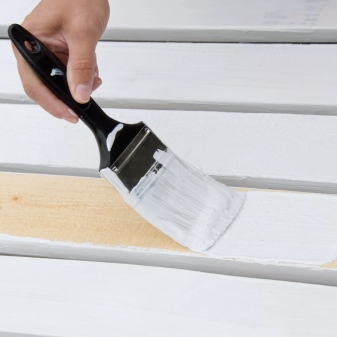
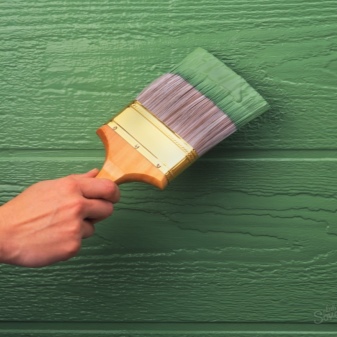
The main advantage of enamels over oil compositions is that they are used not only for painting rooms. Alkyd options are often used for facades. They are characterized by good stability and durability.
One or another surface should be given special attention after processing with similar compounds. When the enamel is applied, the coating becomes smooth and shiny
Paint treatment gives a slightly different result. After staining, the surface is dull and dull.
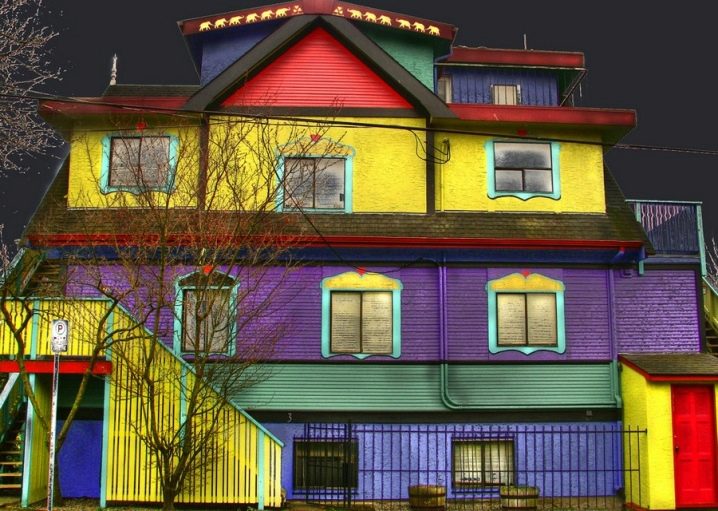
The difference between enamel and paint lies in their hardness and elasticity. The first option has higher performance characteristics. Under the influence of weather conditions or temperature changes, the paint can lose its original properties, which cannot be said about enamel.
The difference between these finishing materials lies in the fact that enamels are used to process certain objects. Paints are necessary for large surfaces. In addition, oil or other formulations are somewhat cheaper than enamels.
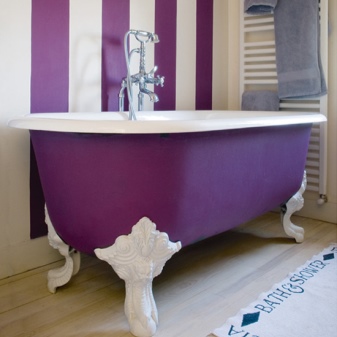
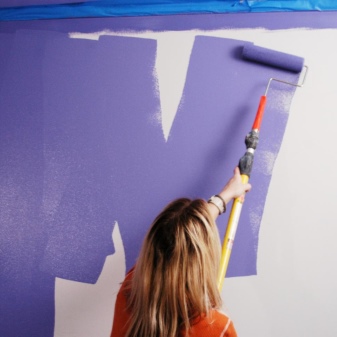
In continuation of the topic, watch a video about the differences between enamel, paint and varnish.
The main differences in the compositions
Acrylic paint can be defined very simply - it will not wash off even under the influence of strong household chemicals. Traditional aqueous emulsion is not so reliable and can be removed even without the use of a solvent. If we talk about other positive aspects, then it should be highlighted:
- Ease of surface coating;
- Fast drying;
- No persistent unpleasant odor;
- UV and moisture resistant;
- Fade slowly.
In addition, the usual water-based emulsion is not suitable for metal surfaces, but acrylic perfectly fits on metal. The same applies to cases when, for example, the wall has already been painted with a different paint - the water-based composition will fall very badly, but there will be no problems with polyacrylates - they can be applied over any analogs.
How to choose the right material
How to paint the walls in the apartment? Before buying wall paint, you need to decide on some factors:
- the room that needs to be painted: kitchen, hallway, nursery, etc.;
- what is the area of the wall for painting;
- what should be the final result;
- tools that will be used when performing work;
- type of base for applying the composition.
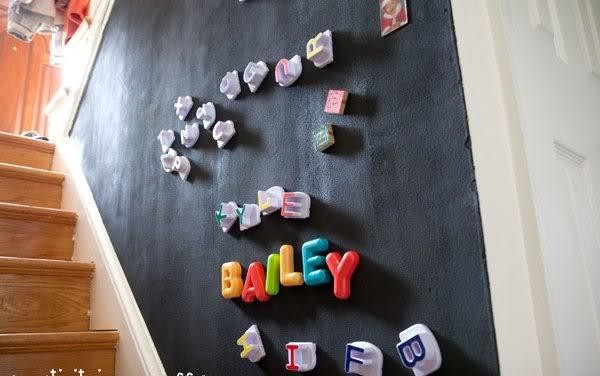
With the help of painting, you can get surfaces that imitate many materials: from wood to precious marble. Glossy paint will always give a shiny surface - this is very beautiful, but you need to use this technique in moderation. The matte paint on the walls and ceiling looks just as good. Recently, magnetic ink is also often used. Everything here will depend on your financial capabilities and desires. Paint compositions for surface finishing are divided into:
- front;
- interior.
Facade ones are used for work outside the building, interior ones - from inside the premises. Moisture-resistant paint is suitable for working in the bathroom.
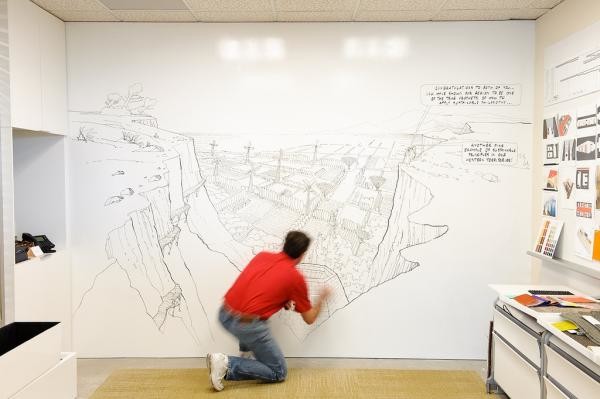
Another parameter that needs to be taken into account is vapor permeability. Breathable are breathable compounds. They are used in children's rooms, in bedrooms, in other rooms, where you have to spend most of the time. An important parameter is the durability of the dye composition.It should be the higher, the more often you plan to wash the painted surfaces.
There are properties of thixotropy and hiding power. They only affect the ease of use of the composition. Spreading rate is the consumption of material per 1 m² of area. Thixotropy is the property of a material to slightly reduce its viscosity. Thixotropic compounds do not drain, do not settle, they are easy to use. Banks with wall products must have a corresponding inscription. They do not stain clothes. The following types are produced:
- water-dispersive;
- silicone;
- oil;
- alkyd.
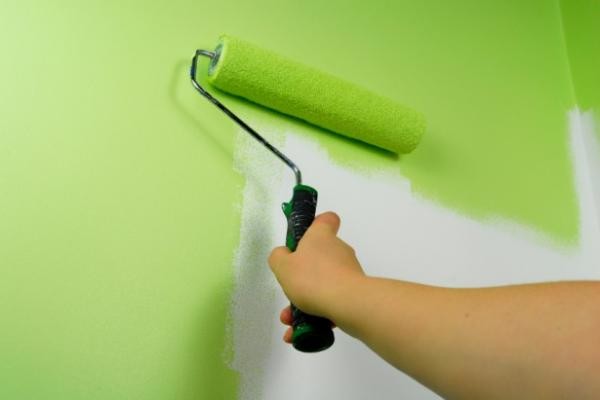
Water-dispersion (they are also called water-based or water-soluble) - the most economical of all types of paints. They dry quickly, do not smell. Their properties depend on the constituent polymers. Cheap options are made on the basis of the well-known PVA glue, acrylic and latex resins. They are used only in dry places. They do not absorb dirt. A variety of them is acrylic mixtures. When dry, they form an abrasion-resistant film. After painting, the walls have a matte finish. Latex paint has similar properties.
Silicone paint is based on emulsified resins. They are characterized by high vapor permeability. They are used for work outside the building.
Oil-based wall paint consists of drying oil and oil-soluble coloring pigments. They are distinguished by great durability and considerable strength. Their disadvantage is that they dry for a long time and have a specific smell. They are not used for interior wall decoration.
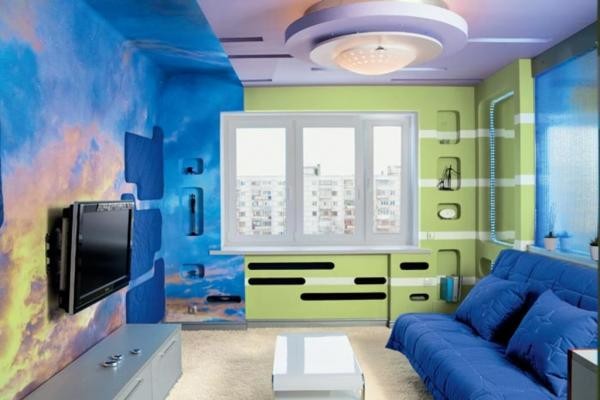
The binder component of alkyd enamels is alkyd resins. They dry quickly to form a strong film. Recommended to protect metal products from rust. Unpleasant odors do not make it possible to use them indoors.
Latex paint and its types

Styrene-butadiene emulsion
The binder in latex dyes is a synthetic rubber based on copolymers.
It gives the following characteristics to the dyeing raw material:
- Resistant to dirt and dust repellent
- Fast drying on the surface
- The ability to evaporate moisture from the painted area due to the fact that the latex layer allows oxygen to pass through
- Saturation of pigments, which makes the color of such paints brighter
- No toxic components (allowed to be used for interior decoration)
- Elasticity, modeling of a flat surface by filling in all irregularities and roughness
- Economical to use

Latex paint
Varieties of paints and varnishes, depending on the components in the composition, are presented in the table.
| View | Specifications | What finish is suitable |
|---|---|---|
| Polyvinyl acetate (water emulsion or water dispersion) | It is made from PVA glue, non-toxic, provides good adhesion to the surface. Disadvantages: unstable, easily washed off with water | For dry rooms |
| Styrene butadiene | Impervious to water, but easily fade in sunlight | For bathrooms, toilets, corridors, basements |
| Acrylic | High-quality, suitable for both interior work, facade decoration and painting of external elements | For interior and exterior decoration |
| Acrylic-silicone | Reliable facade finish with high durability | For facades and rooms with high humidity |
| Washable | Based on acrylate binder polymer | For interior work |
| Rubber acrylate-latex | Creates a coating resistant to moisture, UV radiation, temperature fluctuations, elastic and quick-drying | For covering tennis courts, swimming pools, jogging tracks |
For interior work, the following are most often used:
- vinyl
- acrylic
- drip-free
- textural
- dense
Latex finishes can have different finishing effects: matte, glossy or semi-matte.
Latex materials used:
- For outdoor use (painting of facades)
- For interior decoration (for walls and ceilings)
- For painting the floor
- For waterproofing surfaces
- Universal
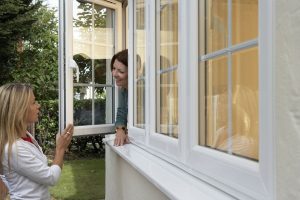
Choosing which plastic windows are better in terms of quality, durability and heat retention. Overview of manufacturers + Reviews
Manufacturers
Today, latex-based paints are very popular and in demand. Many well-known manufacturers offer quality, durable and reliable options. There are many positive reviews about the products of many companies, such as Tikkurila, Parade, Dulux, Dufa, Din Profilux, Pufas. Among the Russian manufacturers, it is worth highlighting the company "Lakra" and "Tex".
Finnish Tikkurila paints have an excellent reputation. They can be used to paint previously painted, putty, concrete and plastered surfaces. The company offers a wide selection of them, so you can easily find the best option depending on the application.
Eco Joker paint is based on acrylic without the addition of organic solvents
The matt washable surface attracts attention with a silky effect. Eco Joker paint is a good choice for painting various surfaces
It looks beautiful on wood, wallpaper and concrete. Perfect for painting brick, cardboard, plaster, plastered surfaces.
Eco Joker interior paint can be applied to both new and painted surfaces. It is ideal for living rooms, bedrooms and children's rooms. Another advantage is that it dries very quickly and a new coat of paint can be applied after just two hours.
"Euro 2" is a good solution for painting ceilings, since it is based on a copolymer dispersion. The paint is matte, environmentally friendly. It can even be used for bedrooms and children's rooms. "Euro 3" is perfect for painting wooden surfaces or fiberboard. "Euro 20" is suitable for wet rooms, as well as for painting radiators.
The English company Dulux offers products with good hiding power. Tinted paints can be used to create stylish interior designs. They are characterized by fast drying and excellent viscosity. Dulux Easy is a good solution for painting wallpaper, while Dulux V Sheen is a good solution for painting surfaces that require frequent washing.
German manufacturer Dufa, owned by Meffert AG Farbwerke, is one of the largest manufacturers in Europe. It offers products for interior and exterior use, regardless of the type of surface.
The products of the German company Pufas are well-known in the Russian market. The brand offers a wide range of colors, ease of use, versatility and affordable price.
Latex paint "Matt-Latex" is safe for health, as it contains no solvents. It is characterized by elasticity, economy, excellent moisture resistance, durability, gives a glossy shine to the surface and its complete drying takes place in a day.
The products of the Swedish company Parade have been in demand in many countries of the world for many years. The brand offers high quality products at an affordable price, offering a wide range of both interior decoration and facade work.
Parade Diy paint is water resistant, therefore it is an ideal option for decorating bathrooms and kitchens. It fits perfectly on the surface, while it is notable for its low consumption. The affordable price will appeal to every customer.
Paints and varnishes of the Russian manufacturer "Lakra" have a good ratio of price and quality.It offers facade and interior options, a wide range of colors, excellent quality, strength and elasticity. Many consumers leave extremely positive reviews about the brand's products.
The Russian company "Tex" offers high-quality acrylic-based paints. The advantage of the product is that it does not drip or run off. The painted surface is breathable and not prone to mold and mildew formation. If we talk about the shortcomings, then before using the product, you must first apply a primer to the surface to be painted.
Advantages of the material
Although acrylic paints appeared on the building materials market not so long ago, they managed to earn great popularity and all thanks to their advantages:
- drying speed from 1 to 2 hours;
- economical consumption due to good distribution over the surface;
- wear resistance, long service life;
- resistance to the negative influence of external factors (wind, rain, snow, sun);
- ease of use - even an inexperienced specialist will be able to figure out how to work with this material;
- fire safety - unlike oil-based finishing building materials, it does not contain flammable substances in the composition, therefore it does not burn and does not provoke the appearance of a large amount of corrosive smoke;
- availability - their cost compares favorably with prices for other finishing materials;
- safety - it does not harm health. In addition, odorless acrylic paints, which indicates the absence of toxic volatile substances in the composition;
- ease of maintenance of tools - brushes and rollers after work, you just need to rinse under running water to clean the residues of material.
The best acrylic paints undergo special tests and certification, so when buying, you should definitely be interested in the availability of the relevant documents from the seller.
Water based paints
This category of paints and varnishes in a wide range is presented on the domestic market and is in obvious demand.
And this is not surprising, since water-based formulations are characterized by the following advantages:
- fast drying (a few hours on average);
- environmental cleanliness and safety and, as a result, no need to use personal safety equipment when carrying out finishing work;
- lack of a specific pungent odor characteristic of most traditional enamels.
- the ability to give the coating a particular color by adding special pigments.
- simple instructions for applying paintwork and the availability of tools necessary for painting;
- affordable price.
Main characteristics
- The composition of water-based paints includes components such as filler, latex, thickener and antiseptic additives.
- Viscosity determines how diluted the dye mixture is with water. To measure this parameter, a special tool is used - a viscometer. On average, the viscosity should not exceed 45 Art.
- Consumption of water-based paints when applied in one layer, on average, is 200 ml per square meter. However, consumption is largely determined not only by the characteristics of the coating, but also by the absorbency of the base.
- The specific gravity of paintwork materials does not exceed 1.40 kg / l.
- Drying times depend on air humidity and room temperature. Depending on the brand of paintwork materials, drying can last from 2 hours to a day. The optimum temperature during painting is considered to be + 20 ° C with a humidity of no more than 65%.
Types of water-based paints
The difference between water-based and water-based paint is the difference in composition.
In accordance with the composition, the following types of water-based paintwork materials differ:
- acrylic;
- mineral;
- silicate;
- silicone.
Acrylic compounds are the most common and in demand.The main component in this case is acrylic resins. To increase the hydrophobicity of the coating, latex is added to the paintwork materials.
Acrylic coating can be applied equally well to wood, masonry, concrete, plaster, glass and metal. A typical example is the fire-retardant paint for metal Polistil. These paintwork materials, despite their specific purpose, are universal and can be applied to any pre-primed surface. (See also How to Putty Walls: Features.)
The composition of mineral water-based coatings includes cement or slaked lime. Such paints and varnishes are used for application to most different surfaces. The disadvantages of these compositions include a small service life.
Water-based silicate materials are a mixture of liquid glass, aqueous solution and pigments. Such coatings are characterized by a high degree of vapor permeability, as well as resistance to atmospheric precipitation and temperature extremes. On average, a properly applied coating will last about 20 years.

